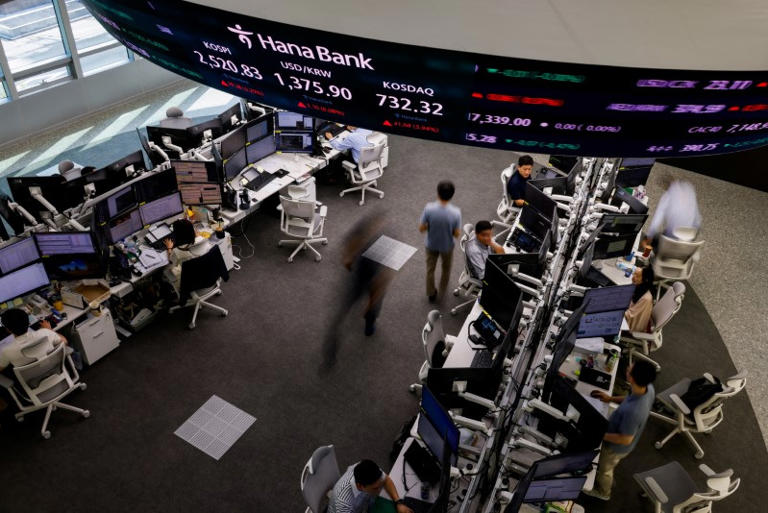In a landmark move that reflects broader global shifts in financial benchmarks, South Korea is poised to announce new guidelines aimed at transitioning its $4.3 trillion interest rate swap market from relying on Certificate of Deposit (CD) rates to the Korea Overnight Financing Repo rate (KOFR). This strategic shift underscores South Korea’s commitment to modernizing its financial infrastructure and enhancing market stability in the wake of global changes to benchmark reference rates.
Background of the Transition
The upcoming transition is driven by the global phase-out of the London Interbank Offered Rate (LIBOR), a benchmark that has long been criticized for its susceptibility to manipulation and inaccuracies. As LIBOR is being retired, financial markets worldwide are adopting alternative reference rates. South Korea is following this trend by replacing CD rates, which have served as a primary reference for interest rate swaps, with the KOFR. The KOFR, based on overnight repurchase agreements, is perceived as a more stable and transparent alternative.
Details of the New Guidelines
Sources familiar with the matter have disclosed that the Bank of Korea (BOK) and the Financial Services Commission (FSC) are finalizing guidelines that will facilitate this transition. The KOFR-linked Overnight Index Swap (OIS) market will be introduced to replace the current reliance on CD rates. This move aims to provide a more reliable and less volatile benchmark for interest rate swaps, which are essential for managing interest rate risks in financial markets.
Interest rate swaps involve the exchange of fixed interest rate payments for floating rate payments, or vice versa. These financial instruments are crucial for hedging against fluctuations in interest rates and are widely used by banks and investors. In South Korea, interest rate swaps have predominantly been tied to CD rates, which have historically influenced borrowing costs and other financial products such as collateralized loan obligations (CLOs).
Rationale Behind the Change
The decision to transition from CD rates to the KOFR is motivated by the need to address the limitations and fluctuations associated with CD rates. CD rates have been subject to variability due to changes in CD issuances, which can lead to instability in financial markets. By adopting the KOFR, South Korea aims to enhance the accuracy and stability of financial benchmarks, thereby fostering greater market confidence and transparency.
The KOFR is expected to offer a more stable reference rate, reducing the risk of manipulation and improving the reliability of financial transactions. The introduction of KOFR-linked OIS will further support this transition by providing a new framework for interest rate swaps that aligns with global best practices.
Implementation and Market Preparation
The guidelines for this transition are expected to outline the Bank of Korea’s and Financial Services Commission’s intentions to restrict the use of CD rates in future interest rate swap transactions. While the specific timeline for phasing out CD rates has not been disclosed, financial authorities are working closely with market participants to ensure a smooth and orderly transition.
This preparation phase is crucial for allowing market participants to adjust their trading practices and adapt to the new benchmark. The gradual implementation will help mitigate potential disruptions and ensure that the transition does not negatively impact market operations.
Broader Implications
South Korea’s move to adopt the KOFR reflects a broader trend of reforming financial benchmarks in response to global changes. By aligning with international standards and adopting a more robust reference rate, South Korea is positioning itself as a leader in financial market modernization. This transition not only enhances the stability and transparency of South Korea’s financial markets but also sets a precedent for other countries navigating similar changes.
The shift from CD rates to KOFR is expected to have far-reaching implications for the financial industry, influencing how interest rate swaps are priced and traded. It highlights the ongoing efforts to improve the accuracy and reliability of financial benchmarks, ensuring that they better reflect market conditions and reduce the risk of manipulation.
Conclusion
As South Korea prepares to implement these new guidelines, the transition from CD rates to the KOFR represents a significant milestone in the evolution of its financial markets. This change is part of a broader effort to modernize financial infrastructure and enhance market stability. By adopting a more reliable benchmark, South Korea is not only addressing current challenges but also positioning itself for future success in a rapidly evolving global financial landscape.
